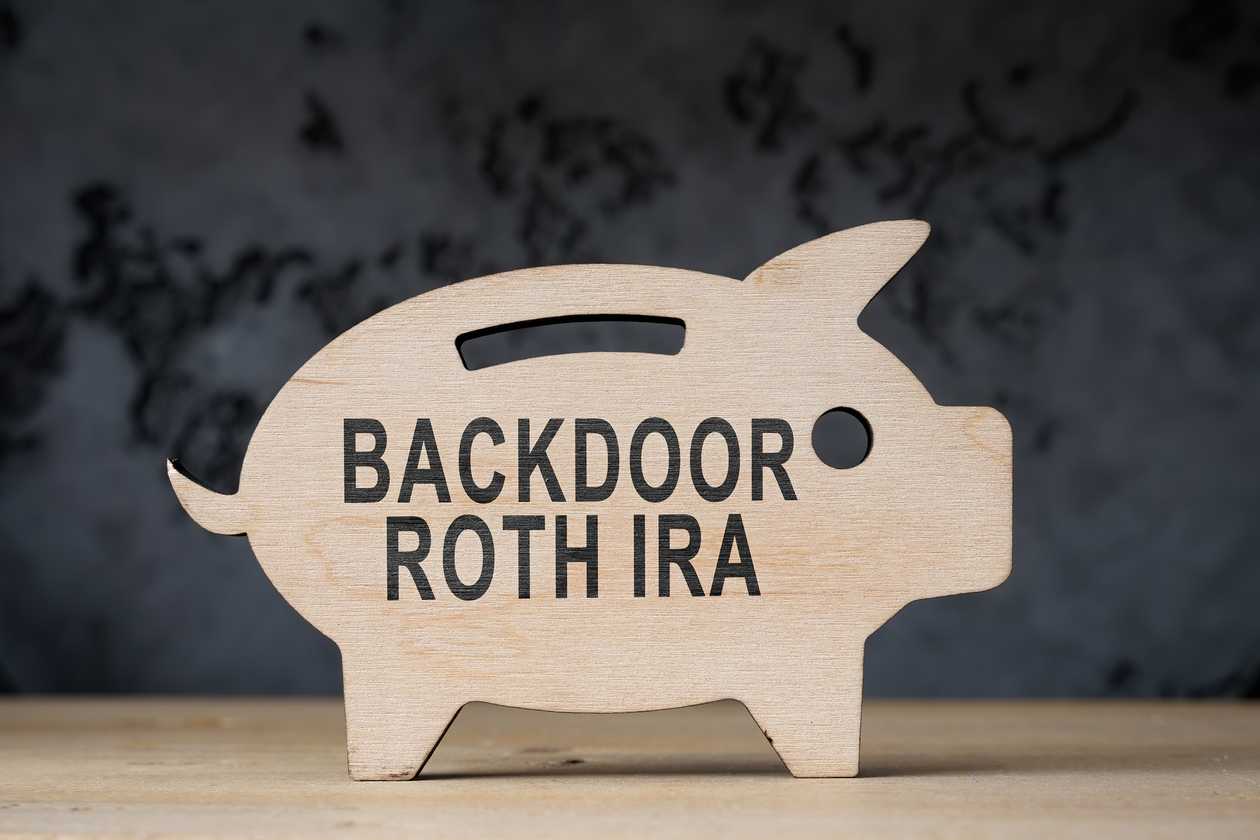Our evaluations and opinions are not influenced by our advertising relationships, but we may earn a commission from our partners’ links. This content is created independently from TIME’s editorial staff. Learn more about it.
Retirement accounts offer a tax-advantaged way to save for retirement, but the IRS limits how much you can add to them each year. The most you can contribute to your IRAs is $7,000 ($8,000 if you're 50 or older) for the 2024 tax year. For 401(k) and 403(b) plans, the elective deferral limit is $23,000, or $30,500 if you're at least 50.
Retirement plans that have the Roth designation—Roth IRAs or Roth-designated 401(ks)—have an additional advantage. While contributions are not tax-deductible when made, they offer not just tax-free growth, like traditional IRAs and 401(k)s, but tax-free withdrawals in retirement.
The mega backdoor Roth strategy permits you to save more in a Roth IRA or 401(k) than otherwise would be permissible, but only if your employer’s 401(k) plan rules permit this strategy. Here’s what you need to know.

Find the right financial advisor with WiserAdvisor
Find the right financial advisor with WiserAdvisor
How do mega backdoor Roth 401(k) conversions work?
The mega backdoor Roth strategy lets you make an after-tax contribution to your employer-sponsored retirement plan and then convert it to a designated Roth account—either within the plan or by rolling your plan contributions into a Roth IRA.
If your 401(k) plan permits it, in 2024 the IRA lets you and your employer contribute up to $69,000—$46,000 above that year’s elective deferral limit—every year. (At 50 or older, the total permitted contribution rises to $76,500.) The amount you can contribute generally changes every year (the 2023 ceiling was $66,000). For example, if you are under 50 and contribute $23,000 and your employer contributes $7,000 in 2024, you would subtract that $30,000 from $69,000. Your maximum additional after-tax contribution would be $39,000.
When converted, the funds receive all the benefits of a Roth account, including tax-free growth, tax-free withdrawals in retirement, and favorable RMD treatment. Roth IRAs have no required minimum distributions (RMDs) during the owner's lifetime, and RMDs will no longer be compulsory for designated Roth plans starting in 2024.
The mega backdoor Roth strategy is a two-step process:
1. Make after-tax contributions to your 401(k)
As noted above, IRA limits let you add a maximum of $69,000 ($76,500 if you're 50 or older) to your 401(k) for the 2024 tax year. The aggregate limit includes contributions from three separate sources, or "buckets":
- Pre-tax and/or Roth contributions—up to $23,000 ($30,500 if you're 50 or older) for the 2024 tax year.
- Employer contributions, if you have any.
- After-tax contributions (the core of the mega backdoor Roth strategy).
To calculate your allowable maximum after-tax contribution, subtract your pre-tax and Roth contributions and your employer match from the aggregate contribution limit. For example, say you're under 50 and contribute the maximum of $23,000, and your employer kicks in $7,000. Because the total limit is $69,000, you could contribute up to $39,00 more ($69,000 – $23,000 – $7,000) for 2024 using the mega backdoor Roth.
There’s one other limit to note: The total contributions from you and your employer can’t exceed your annual income. If you made only $65,000, you could contribute only an additional $35,000 in 2024 in the example above.
2. Convert your after-tax contributions (and related earnings) to a Roth account
You can elect an in-plan Roth conversion, or—if your plan permits in-service distributions (withdrawals taken while you're still employed— roll the after-tax contributions into a Roth IRA, paying tax on any earnings. (Unlike annual Roth IRAs, rollovers don’t limit the size of your contributions—or how much you can earn to make them.)
Keep in mind that not all plans permit mega backdoor Roths. Review your plan's Summary Plan Description or speak with your plan administrator to determine what your plan allows. Also, remember that creating a mega backdoor Roth is complicated. It's advisable to consult with a tax professional and/or a financial advisor, such as J.P. Morgan, for help navigating the strategy and minimizing the tax bite.
Mega backdoor Roth and the pro-rata rule
The pro-rata rule applies to mega backdoor Roths when you have pre-tax and after-tax contributions in a traditional 401(k). Under the rule, you can't just convert your after-tax contributions. Instead, the IRS considers any conversion to include a pro rata (or proportional) amount of pre-tax and after-tax money relative to the contribution sources.
For example, say your 401(k) has $90,000 of pre-tax and $10,000 of after-tax contributions. Any converted funds would be deemed $9 of pre-tax for every $1 of after-tax money for tax purposes. That can be problematic because you'll owe income tax on any amounts attributed to pre-tax contributions. It's essential to consider the impact of the pro-rata rule on your retirement savings before using a mega backdoor Roth (a tax specialist or financial advisor can help).
Alternatives to the mega backdoor Roth
The mega backdoor Roth strategy may not work with your plan, but there are other ways to fund a Roth. For instance, you can contribute directly to a Roth IRA if you're under the income limit—or indirectly via a backdoor Roth if you earn too much. You can also contribute to a Roth 401(k) if your employer offers one. To get the most out of any Roth account, start early and try to max out your contributions each year to take full advantage of the power of compounding.
Is a mega backdoor Roth right for you?
A mega backdoor Roth can be an excellent way to boost your nest egg while lowering your tax bill during retirement, but it's not suitable for every investor. Here are five scenarios when the strategy might make sense:
- Your company's 401(k) allows after-tax contributions and either in-service distributions or in-plan Roth conversions.
- You already maxed out your annual 401(k) and IRA contributions.
- You can't fund a Roth IRA directly because your income is too high.
- You have extra cash you'd like to stash in a Roth account.
- You don't need the money for something important, like paying down debt or saving for college.
TIME Stamp: Unlike a backdoor Roth, the mega backdoor Roth lets you move money from a 401(k).
The mega backdoor Roth shouldn't be confused with the backdoor Roth. While both strategies let you get around Roth IRA income limits, they work differently. With a backdoor Roth, you roll funds from a traditional IRA into a Roth IRA. The mega backdoor Roth strategy involves moving money from your 401(k) into a Roth IRA or 401(k).
Roth IRAs have several advantages over their traditional counterparts, which is why many investors make an effort to boost their Roth accounts.
A key difference is the timing of the tax benefit. With traditional IRAs, you can deduct your contributions, but you pay taxes when you withdraw funds in retirement. Roth IRAs don't have an upfront tax break, but contributions and earnings grow tax-free, and qualified withdrawals are also tax-free, which can lessen the tax bite in retirement. Also, Roth IRAs don't have required minimum distributions (RMDs), so you can let the account grow tax-free for your heirs, making Roth IRAs ideal wealth transfer vehicles.
Frequently asked questions (FAQs)
When did mega backdoor Roths start?
The mega backdoor Roth became a viable strategy in 2010, following the Tax Increase Prevention and Reconciliation Act of 2005. Critics have proposed legislation that would limit or eliminate this strategy. However, nothing has passed yet, so it remains a legal way to contribute more to your Roth accounts.
How do I report a mega backdoor Roth on a tax return?
After-tax contributions are nontaxable because you've already paid tax on that money, but you will owe tax on any investment earnings. You should receive a 1099-R from your plan showing you received a distribution from your account and Form 5498 from your Roth IRA custodian. You'll transfer the information to your tax return, whether a tax pro prepares your return or you use tax software. Remember, mega backdoor Roths are complicated. Consult with a tax professional to ensure you avoid surprises at tax time.
Why are mega backdoor Roth conversions criticized?
The mega backdoor Roth is only available to some, and higher-income corporate employees are generally the ones who can afford to participate. For this reason, critics view the strategy as an unfair way for high-income earners to exploit the tax advantages of Roth accounts: tax-free growth, tax-free withdrawals, and no RMD requirements.
The information presented here is created independently from the TIME editorial staff. To learn more, see our About page.

